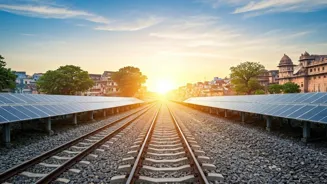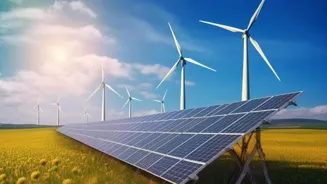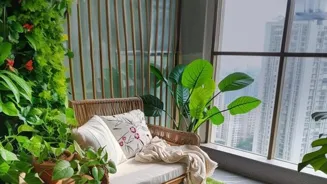Discover the Power of Nature: Transform Your Home into an Eco-Friendly Haven! Dive into 5 ways to make a sustainable impact
In the bustling cities and serene villages of India, there's a growing wave of awareness
about the importance of living in harmony with nature. Creating an eco-friendly home environment is not just a trend; it's a responsibility we owe to ourselves and future generations.

It's about making small, conscious changes that collectively contribute to a healthier planet. From reducing our carbon footprint to conserving precious resources, every step counts. Creating an eco-friendly home is much easier than you think!
Let's explore five simple yet powerful ways to transform your living space into a haven of sustainability.
Embracing Natural Lighting and Ventilation:
Harnessing the power of natural light and ventilation is one of the simplest and most effective ways to reduce your energy consumption. In India, we are blessed with abundant sunlight throughout the year.
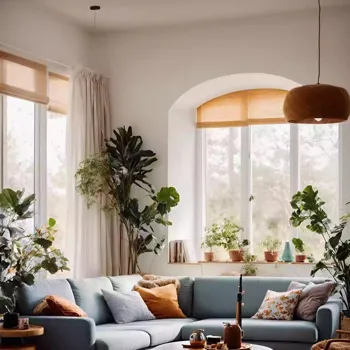
Instead of relying solely on artificial lights, maximize the use of natural light by keeping your windows clean and uncluttered. Opt for light-colored curtains or blinds that allow sunlight to filter through while maintaining privacy.
Position your furniture strategically to take advantage of natural light during the day. Proper ventilation is equally important. Open your windows and doors regularly to allow fresh air to circulate throughout your home.
This not only reduces the need for air conditioning but also improves indoor air quality by removing pollutants and allergens. Consider installing window screens to keep insects out while enjoying the breeze.
Furthermore, planting trees and shrubs around your home can provide shade, further reducing the need for artificial cooling.
Water Conservation Techniques:
Water is a precious resource, and conserving it is crucial, especially in a country like India where water scarcity is a growing concern. Start by fixing any leaky faucets or pipes to prevent water wastage.
Consider installing low-flow showerheads and faucet aerators to reduce water consumption without compromising water pressure. When washing dishes or clothes, use only the necessary amount of water. Avoid letting the tap run continuously while brushing your teeth or shaving.
Rainwater harvesting is another excellent way to conserve water. Collect rainwater in tanks or barrels and use it for gardening, washing your car, or flushing toilets. You can also recycle greywater, such as water from your washing machine or shower, for non-potable purposes like watering plants.
Mulching your garden can help retain moisture in the soil, reducing the need for frequent watering. By implementing these water conservation techniques, you can significantly reduce your water bills and contribute to a more sustainable future.
Sustainable and Eco-Friendly Materials:
When renovating or decorating your home, opt for sustainable and eco-friendly materials. Choose bamboo or reclaimed wood flooring, as they are renewable resources and add a touch of natural beauty to your home.
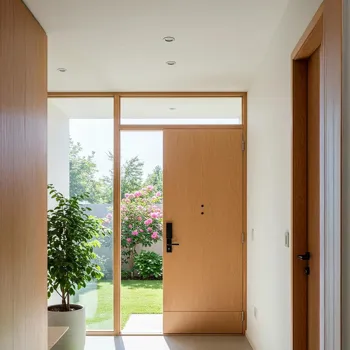
Use paints and varnishes that are low in volatile organic compounds (VOCs), as these chemicals can pollute indoor air and pose health risks. Consider using natural fibers like cotton, jute, or hemp for your curtains, rugs, and upholstery.
Repurpose old furniture and materials instead of buying new ones. This not only saves money but also reduces waste. When buying new furniture, look for pieces made from sustainable materials and produced using eco-friendly manufacturing processes.
Support local artisans and businesses that prioritize sustainability. By making conscious choices about the materials you use in your home, you can create a healthier and more environmentally friendly living space.
Energy-Efficient Appliances and Lighting:
Investing in energy-efficient appliances and lighting is a smart way to reduce your carbon footprint and save money on your electricity bills. Replace incandescent light bulbs with LED bulbs, which consume significantly less energy and last much longer.
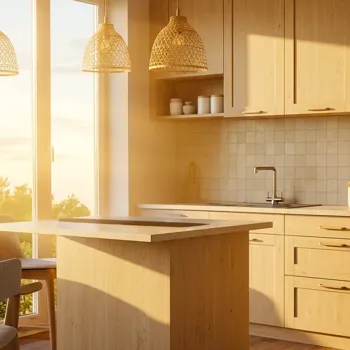
Look for appliances with high energy efficiency ratings, such as refrigerators, washing machines, and air conditioners. Unplug electronic devices when they are not in use, as they continue to consume energy even when turned off.
Use a smart power strip to automatically cut off power to devices when they are not in use. Consider installing solar panels on your roof to generate your own electricity. This not only reduces your reliance on fossil fuels but also provides a clean and renewable source of energy.
By making these changes, you can significantly reduce your energy consumption and contribute to a more sustainable future.
Embracing Indoor Plants:
Bringing the outdoors in is a wonderful way to create a more vibrant and healthy home environment. Indoor plants not only add beauty to your living space but also improve indoor air quality by removing pollutants and releasing oxygen.

Choose plants that are well-suited to your climate and lighting conditions. Some popular choices for Indian homes include snake plants, spider plants, and money plants, as they are easy to care for and effective at purifying the air.
Place plants strategically throughout your home to maximize their benefits. Water them regularly and provide them with adequate sunlight. You can also create a vertical garden or a herb garden on your balcony or windowsill.
By incorporating indoor plants into your home, you can create a more relaxing, refreshing , and eco-friendly living space.
Creating an eco-friendly home environment is a journey, not a destination. Every small change you make can have a positive impact on the planet.
By embracing natural lighting and ventilation, conserving water, using sustainable materials, investing in energy-efficient appliances, and bringing the outdoors in, you can transform your home into a haven of sustainability and contribute to a healthier future for all.
Let's work together to create a greener and more sustainable India!
Reducing energy needs starts with switching to LED lights, and the sun is a free source of light and warmth.
Simple actions such as fixing water leaks save water, and a greener surrounding is always good.



